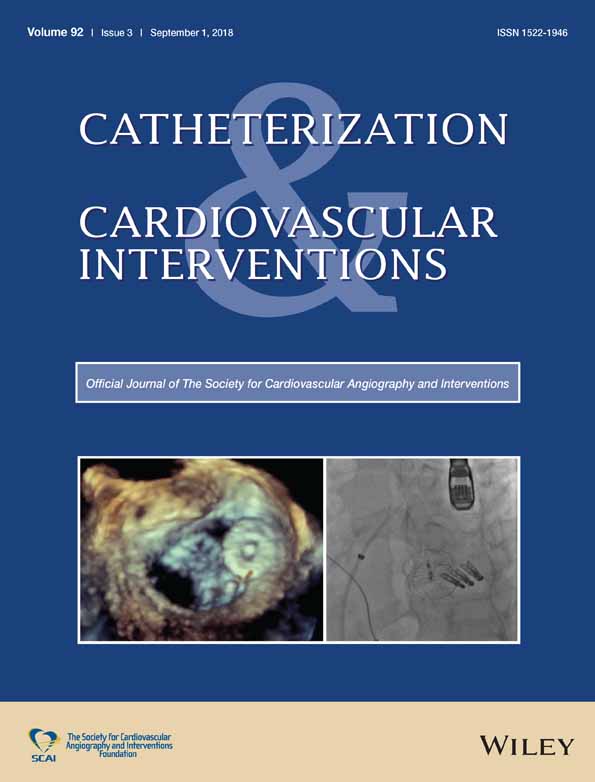Comparison of self-expanding and balloon-expandable transcatheter aortic valves morphology and association with paravalvular regurgitation: Evaluation using multidetector computed tomography
Abstract
Objectives
Compare final morphology of self-expanding and balloon-expandable prosthesis and association with paravalvular regurgitation (PVR).
Background
PVR after transcatheter aortic valve replacement (TAVR) remains a frequent complication. A better understanding of the prosthesis geometry may be important to improve selection of the best device for each case and possibly reduce the rates of PVR.
Methods
Retrospective study including patients consecutively submitted to transcatheter aortic valve replacement: August/2007-October/2016. Three months after the procedure a multidetector computed tomography (MDCT) was performed to assess prosthesis geometry: dimensions, eccentricity, and expansion.
Results
A total of 147 individuals were included (mean age of 78.8 ± 6.7 and 50.3% males), 57% treated with a self-expanding prosthesis. On the postprocedure MDCT, the self-expanding group had higher eccentricity index (15.0 vs. 7.1%, p < .001) and lower expansion (68.3 vs. 82.8%, p < .001). In that group, the volume of calcium of landing zone had a significant correlation with eccentricity index and under-expansion. Patients with ≥mild PVR presented higher eccentricity (12.6 vs. 7.9%, p < .001) and lower expansion (68 vs. 75%, p = .012). Eccentricity index and landing zone calcium volume were independent predictors of PVR.
Conclusions
Self-expanding prosthesis have greater eccentricity and under-expansion. Calcium burden exerts more influence in the final morphology of that type of valve. Calcification and eccentricity are associated with the development of PVR. These factors should be considered in the selection of the most appropriate type of prosthesis for each scenario.
CONFLICT OF INTEREST
The authors have no conflicts of interest.




